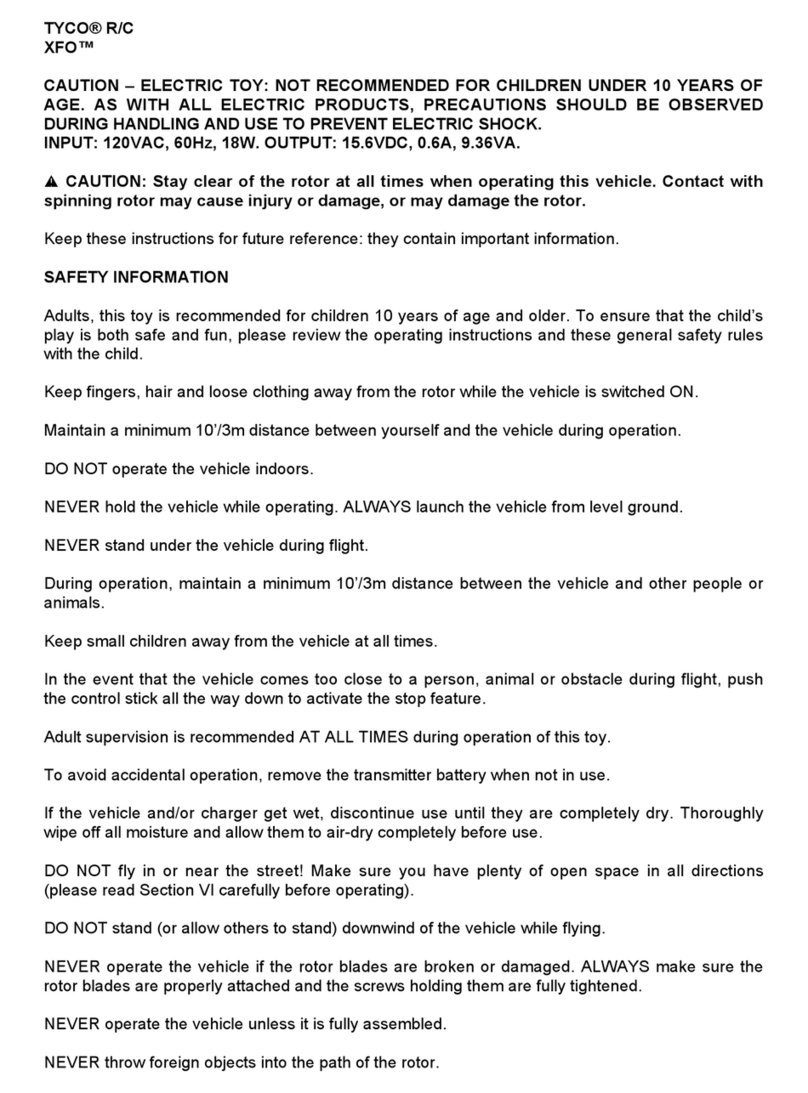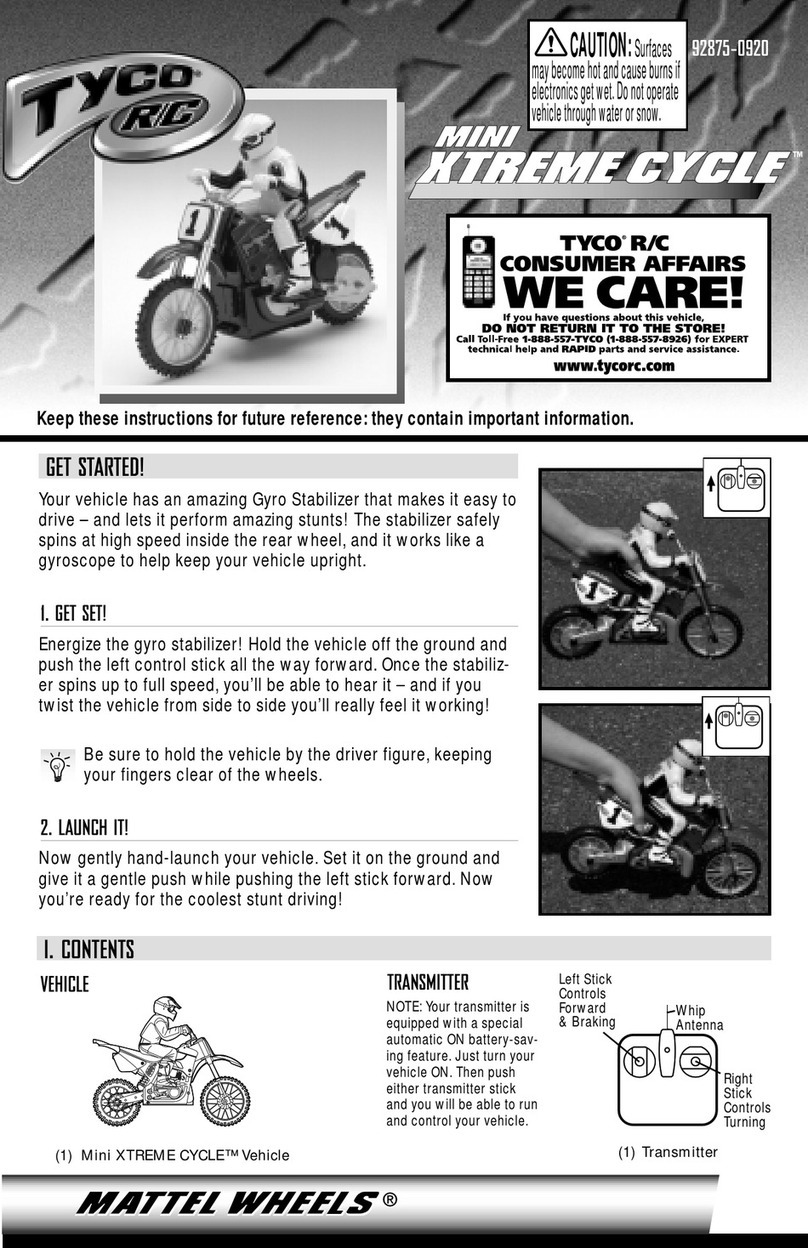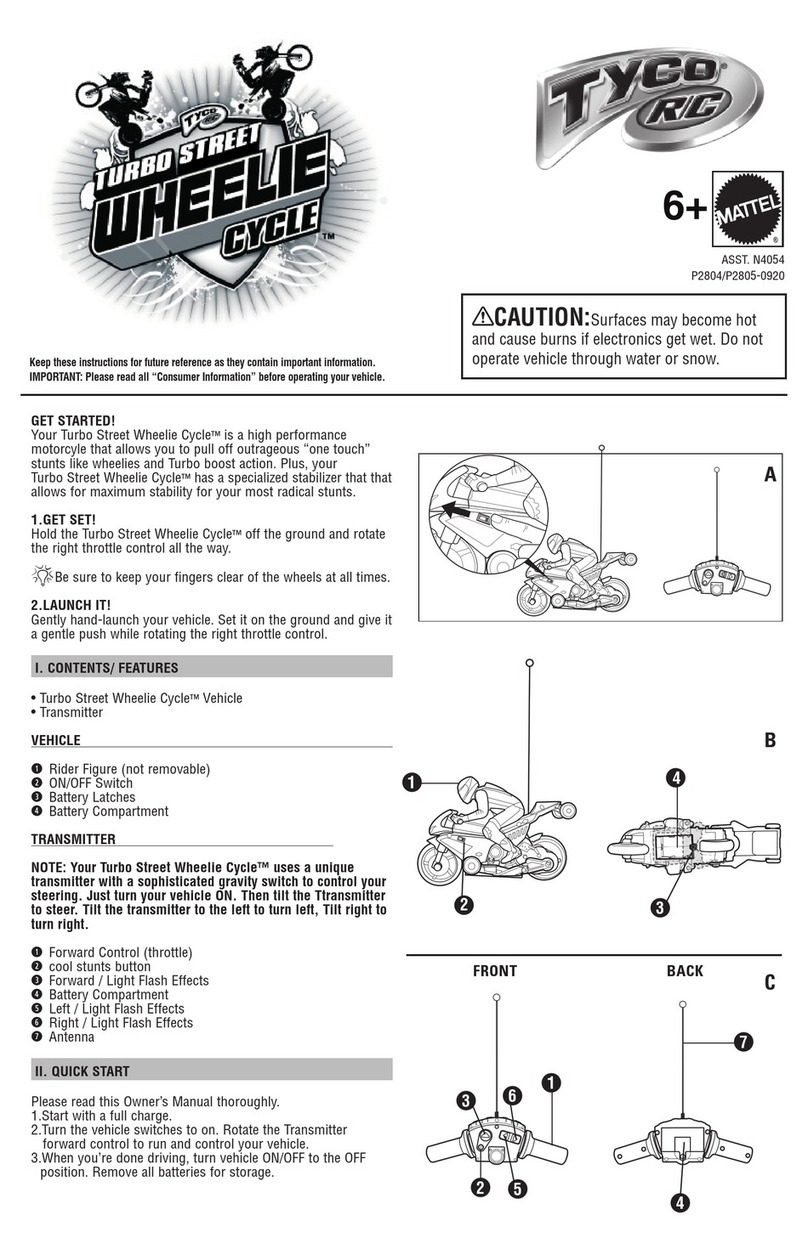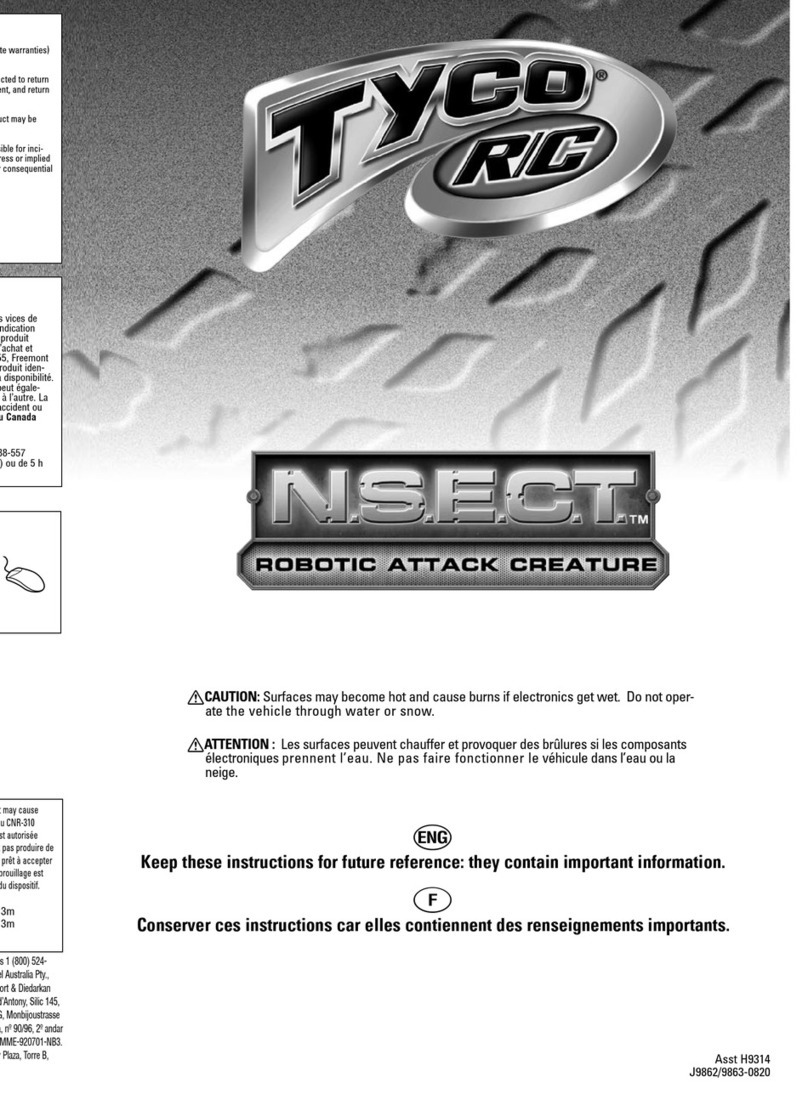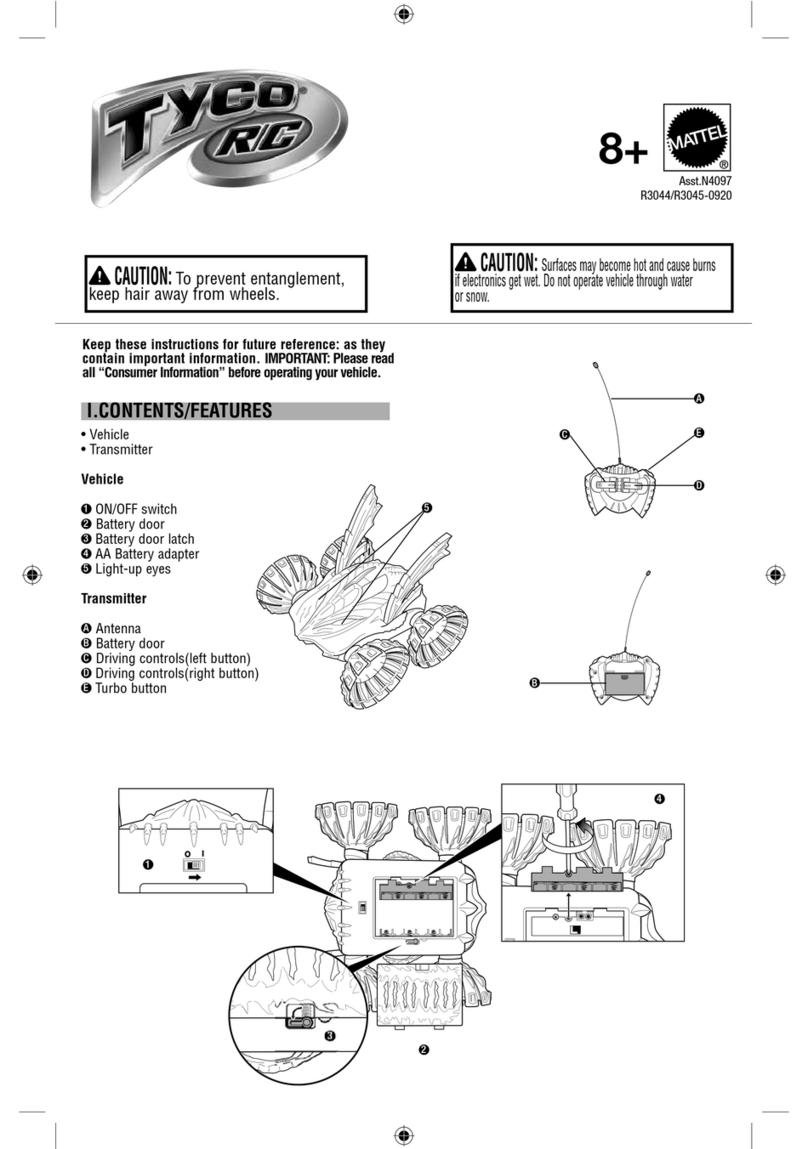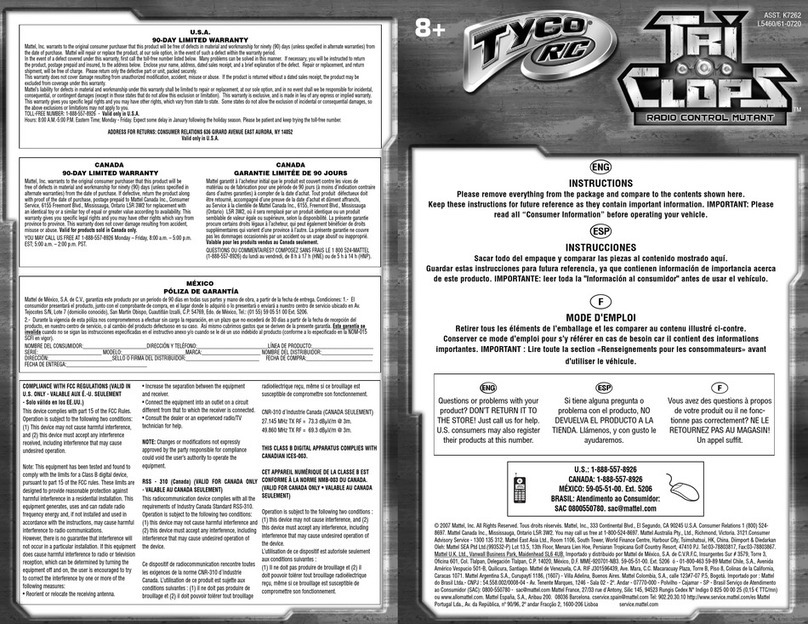E. CONTACTS
1. CLEANING CONTACTS
Regularly clean your car’s
contacts to remove oxidation. Using a
pencil eraser, as shown, carefully scrub
the contacts. Do not apply too much
pressure, or you may bend contacts.
DO NOT USE STEEL WOOL.
Worn-out contacts can be replaced.
2. CONTACT REPLACEMENT
Your vehicle’s contacts should last a
minimum of 8-10 total hours of racing,
with regular cleaning. You may need
to replace the contacts if they become
overly worn or bent…or if they become
dislodged after an impact.
The best way to replace contacts is
one at a time, using the remaining
contact assembly as a guide. Be careful
not to bend the contacts out of shape
(especially wide slotted end).
a. Hold chassis bottom side up. Hold the
spring as shown (with your thumb on one
side of the chassis and your forefinger
on the other). You’ll need to hold the
spring securely throughout the assembly
process.
b. Hook the narrow end of the contact under
the motor shaft. Hook the curved side tab
of the contact over the spring; the spring
will be held in place by the curved tab.
Place the wide (slotted) end of the contact
into place, with the chassis tab through
the slot. Making sure not to over bend the
contact slot.
c. Still holding the spring securely, turn the
chassis over. You may need to press the
top of the contact into place with the tip
of a pencil. When properly installed, the
contact will spring back when pushed.
F. HEAT SHIELD
1. INSTALLATION
The heat shield is an important
component, and it must be correctly
installed for proper vehicle operation.
Make sure the side tabs of the heat
shield are properly inserted in the
chassis slots, as shown. If the heat
shield is not correctly installed, it may
interfere with vehicle movement.
2. CLEANING
Occasionally dust and debris may build
up under the vehicle’s heat shield,
interfering with operation. To check for
this problem, stop racing and let the
vehicle sit for 5 minutes. Remove the
heat shield and gently blow out any dust.
Reinstall the heat shield as described
above.
Don’t operate any vehicle without a
heat shield. If the heat shield is lost,
or can’t be installed properly, please
contact Customer Service at the toll-
free number shown in this manual.
CHASSIS
(back view)
B. TRACK CLEANING
Clean track is IMPORTANT for best
performance!
1. Dirty track may cause your vehicle to
stall. Usually you can get it going again by
pressing the hand controller trigger about
halfway down while you give the vehicle a
slight push from behind. After 3-4 laps your
vehicle will run properly.
2. Sometimes oxidation may form on the track
rails, and this may cause your car to stall.
If this happens, you’ll have to remove the
oxidation. Using the supplied sandpaper,
GENTLY rub the track rails. Don’t rub hard
– rails are clean when they’re shiny. After
cleaning, wipe the track with a soft, clean,
lint-free cloth to remove any residue (don’t
use tissue or paper towels).
NEVER use steel wool to clean your track:
severe damage can result if a fiber of
steel wool is picked up by the magnets
in your car’s motor. Use only very fine
sandpaper for cleaning.
3. Sometimes debris can accumulate in the
track slots. If this happens, use a
toothpick to clear the debris from the slots.
C. VEHICLE CLEANING
1. CLEANING TIRES
Dirty tires can cause your car to lose traction
and spin. To clean the tires, place a piece of
adhesive tape on a hard, flat surface, with
the sticky side facing up. Roll the rear tires
across the tape until they’re clean.
2. CLEANING AXLE
Lint may collect around your car’s axles:
this may cause the car to run slowly. Use
tweezers or a toothpick to remove lint as
shown.
D. ALIGNMENT
1. AXLE ALIGNMENT
Your car’s axle assembly may become
“dislocated” from the chassis as a result
of a sudden impact. To realign it, snap the
assembly back into the chassis.
DO NOT use any type of tool to snap the
chassis back in place. Use only your
fingers.
2. CHASSIS ALIGNMENT
Occasionally check the position of the car’s
body to make sure it is properly aligned and
not rubbing against the tires. If necessary,
carefully snap chassis back onto the body
tabs, as shown.
